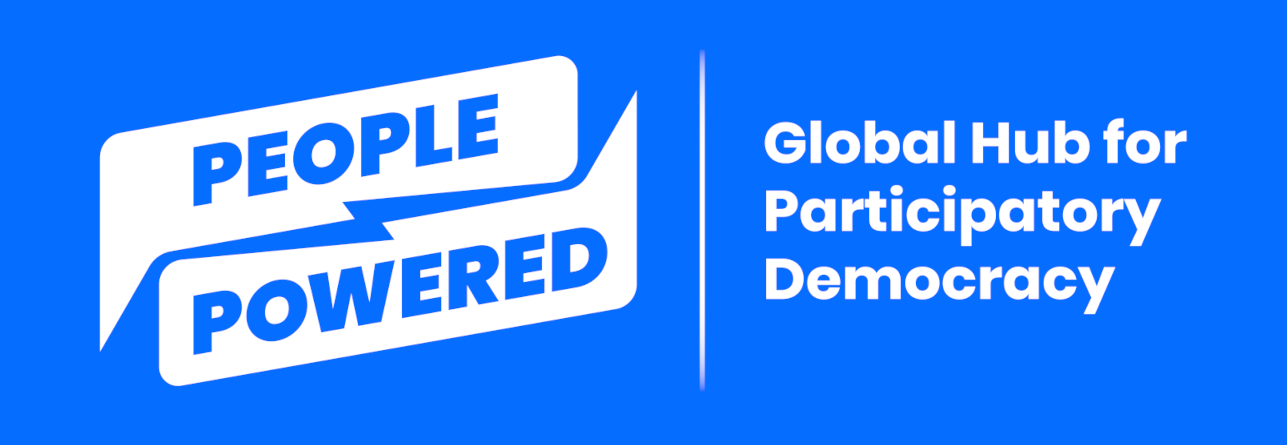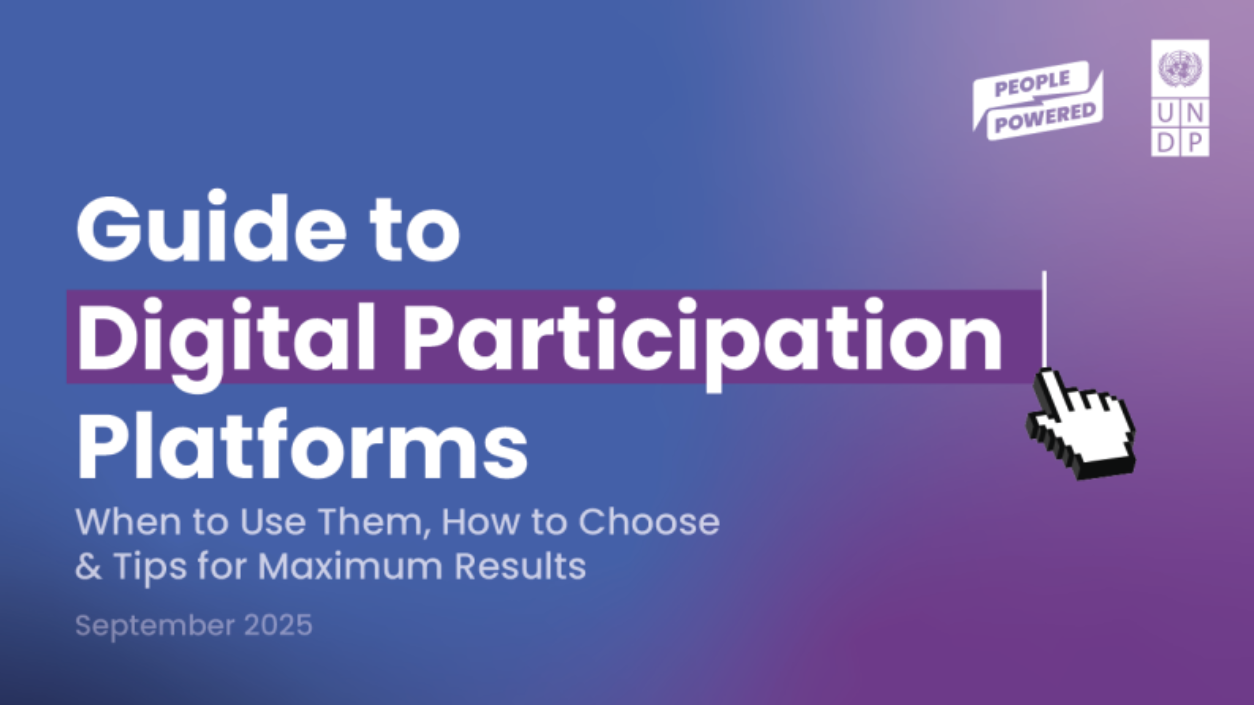Introduction
/Introduction
Over the past 15 years, governments and other institutions have leveraged digital platforms to engage citizens, residents, and constituents in decision-making. Platform developers, open source contributors, consultants and program administrators now comprise an ecosystem that invites the public to take on a greater role. They are increasingly digitizing existing programs like participatory budgeting, and envisioning entirely novel engagement patterns made possible by AI.
The maturity of the digital participation platform sector can be seen, for instance, in the endowment of international foundations to steward open source platforms like Decidim and CONSUL. And in the launch of an industry trade alliance, Association Civic Tech Europe, to collectively represent many of the for-profit platforms.
Around the world, entrepreneurs and civic hackers have developed a growing array of digital participation platforms to serve growing demand for people power. These tools help administrators within all levels of government, plus civil society organizations and other institutions, engage constituents. Collectively, they address almost any participatory method imaginable, including support for digitizing fully offline engagement methods. Digital participation platforms are being used before, during, and after participatory processes to enhance activities like urban planning, budget prioritization, citizen assemblies, and co-developing policy. And they're rapidly introducing AI-powered features to help participants and administrators alike run more frequent and more meaningful engagements.
While we often hear about technological platforms developed in wealthier countries, they have been used to enable participatory decision-making in a wide variety of global contexts. At their best, platforms enable decision-makers or communities to facilitate:
Stakeholder engagement.
Forging consensus or compromises.
Collective deliberation and decision-making.
Effective communication with the public.
Transparent project tracking and monitoring.
Department-spanning internal coordination.
Sensemaking to legibly share the results of a process.
If you are looking to engage your community, or are interested in how digital tools can strengthen community engagement, this guide is for you. It explains what digital participation platforms are and walks you through how to choose, set up, and run them.
The first version of this guide was written in 2021 and published in early 2022. This second edition represents a significant update and expansion. The global People Powered community voted to update this resource to reflect the availability of AI features to streamline the work involved in running a process, and hopefully to enhance participants' experiences. This section includes discussion of the significant concerns and risks that come along with relying on AI in the context of participation processes. We've also updated the guide to reflect non-AI tech updates, like improvements in integrations across multiple participation tools.
We've also taken the opportunity to expand the collection of case studies woven throughout this guide, with a priority on examples situated in the Global Majority. This edition includes new insights from cases in Thailand, Germany, Northern Ireland, Uganda, Taiwan and Colombia.
Any resource on enabling democracy needs to be developed with awareness of the larger political situation, and we've updated this resource to address the unfortunate reality of backsliding democracies, increasing autocracy, and growing prevalence of threats to physical and digital security, as well as fundamental human rights. That includes an updated and expanded cybersecurity section, including a dedicated "What you can do about it" section to guide preparation.
There have been positive developments since the publication of this guide's first edition. Tech policy has grown more complicated, but also more relevant. For example, in major jurisdictions around the world, nation states and multilateral bodies have passed stronger regulations protecting data privacy and child safety online, or to modernize government procurement of technology. We've added a concise guide to relevant policy you should know about, and where to turn for regular updates and analysis. You'll also find greater discussion of data governance, and a new list of "Questions to ask about AI functionality" in the Appendix section: How to evaluate a platform.
Since 2021, People Powered has also developed a number of digital participation resources to support this guide. This includes a Participation Playbook module to help people design a digital participation action plan, ratings and foundational courses on digital participation. We are taking this opportunity to refresh and expand them. That includes new annexes, including a Glossary and an overview of where to find single-purpose engagement tools that fall outside the scope of this effort.
We've reviewed thousands of participatory democracy tools and platforms, and offer this guide to spotlight inspirational case studies and provide an overview of the entire market for your consideration (see the updated Appendix: Matrix of platforms).
Lastly, this new edition reflects the developing partnership between People Powered and the United Nations Development Programme (UNDP) around the promotion of digitally enabled civic engagement. UNDP’s country presence, long-standing engagement with a wide range of public institutions and on-going work on safe and inclusive digitalization can add significant value to the efforts this guide is intended to support.
People Powered is a global hub for participatory democracy, defined as direct participation of community members in making policy decisions that affect their lives. We support innovative practices of participatory and deliberative democracy, like participatory budgeting, citizens’ assemblies, and collaborative policy-making. We help practitioners address common challenges and shift power toward historically marginalized communities.
Our mission is to expand people’s power to make government decisions by supporting organizations and governments that are building participatory democracy around the world. We envision a world where all people and communities have the power to address their needs, uphold their rights, and pursue their dreams through inclusive and responsive government institutions. We approach our work through the values of inclusion, collaboration, problem-solving, equity, and learning.
As the lead United Nations agency on international development, UNDP works in 170 countries and territories to eradicate poverty and reduce inequality. We help countries develop policies, leadership skills, partnerships and institutional capabilities to achieve the Sustainable Development Goals. UNDP’s mandate is to end poverty, build democratic governance, rule of law, and inclusive institutions. We advocate for change, and connect countries to knowledge, experience and resources to help people build a better life.
For this edition, we would like to thank the primary author of the guide, Matt Stempeck, the Digital Participation Committee, and the People Powered community for their input and feedback. In particular, we want to recognize Ana Doria, Reema Patel and Caroline Khene for their thoughtful review. The primary author of this guide, Matt Stempeck, would like to thank Melissa Zisengwe, Nikhil Kumar, and Osakiodeme Ikhinmwin from the People Powered team for their input, resources, and guidance on the second version of the guide.
We also acknowledge the review process and inputs received from the Open and Inclusive Public Sphere Team, within the Governance, Rule of Law and Peacebuilding Hub of the United Nations Development Programme (UNDP), led by Sarah Lister. Detailed inputs and comments were provided by Emanuele Sapienza, Soledad Gattoni, Kiri Ginnerup, Pauline Deneufbeurg, Javier Brolo, Alberto Cottica and Banu Maarouf. Particular thanks are extended to the members of the UNDP Digital Office, Keyzom Ngodup and Helin Su Aslan.
This resource was made possible thanks to the support of the Global Innovation Hub of Friedrich Naumann Foundation for Freedom. The Hub, based in Taiwan, focuses on digital transformation and innovation for democracy. Our partners at Friedrich Naumann Foundation have also supported the People Powered team to develop additional resources to amplify the impact of this project, including free online courses and a Participation Playbook module. Along with People Powered’s platform ratings, these resources provide practical digital participation guidance, help advocates and policymakers choose online participation platforms that best suit their need, and guide users to develop action plans for launching or improving digital participation. We are grateful to Ya-wei Chou and the FNF Global Innovation Hub team for their detailed review and support.
In addition, we are grateful to the digital participation platform developers and administrators who shared their expertise and perspective with us in interviews. An immense thank you goes to Rapudo Hawi of Kijiji Yeetu (Kenya), Joanitah Success Nsasiirwe of SEMA (Uganda), Jason Wagner of District of Siegen-Wittgenstein (Germany), Lukas Salecker of DeliberAIde, Ireland Twiggs of Ireland Cooperation (Northern Ireland), Evelien Nieuwenburg of Dembrane, Armando Navarro and Angela María Beltrán Ortega of Open State and Public Innovation in Fundación Corona (Colombia), Colin Megill of Computational Democracy Project (United States), Thanisara GG Ruangdej of WeVis (Thailand), Peter Cui Jia Wei of vTaiwan (Taiwan), Sofía Corona of Code for All Network (Mexico), Jonathan Piron of Particitiz (Belgium), Colombina Schaeffer of Ciudadanía Inteligente (Chile), Mateusz Wojcieszak of Fundacja Pole Dialogu (Poland), Ming Zhuang of Social Equity and Participation Center (China), Margo Loor of CitizenOS (Estonia), Eunmi Hwang, Ohyeon Kwon, Jisun Song, and HyunSuk Hwang of Parti Co-op (South Korea), and Denique Souta of Slashroots (Jamaica).
For the previous edition of the guide, we would like to thank Alberto Ford, Diana Dajer, Mustapha Khamissa, Kelly McBride, Anastasia Fadeeva, Katya Petrikevich, Kayla Knight, Dimitri Lemaire, Stefano Stortone, and Pam Bailey, the National Endowment for Democracy and the International Republican Institute for their contributions.
We wrote this guide for anyone looking to connect people to power in their community — whether they be from local government, a civic group, or an organization. We pay extra attention to the experiences of those in local government, because that's a key context through which people can exert power. We've also focused on Global Majority platforms and case studies wherever possible, while acknowledging that the imbalance of global resources may mean that platforms from wealthier countries are over-represented.
While there's an ever-growing number of government- and democracy-related technologies, this report is focused on those designed to support collective decision-making and deliberation. To narrow down the diverse array of participation-enabling technologies and provide readers with flexible solutions, we've limited our scope to platforms that offer a variety of engagement options, instead of single-purpose tools. We have added an appendix resource, where you can find dedicated tools for common use cases, like conducting a survey.
This guide is also focused on engagement platforms specifically designed to facilitate meaningful participation, even though we acknowledge that some participatory processes successfully repurpose fundamental digital tools, like mainstream messaging apps and productivity platforms toward the same goals.
To keep this guide as useful as possible to readers looking to select a tool, we've limited our discussion to the platforms that anyone can download or subscribe to, rather than limited-availability offerings. Subscriptions are usually provided via Software-as-a-Service (SaaS) models, in which the platform provider hosts the software on behalf of the customer in exchange for a monthly or annual fee. Likewise, we've only included actively maintained options in this review, although we've woven hard-won lessons from now-defunct digital platforms throughout the report.
Context is everything, so we attempt to address considerations for a variety of geographic and political situations around the globe. We endeavor to feature the platforms that help public officials and civil society organizations include members of the public in meaningful decision-making. There are many digital tools that allow institutions to consult their communities, or to report specific issues to governments, but we believe it is critical to expand community members’ power beyond providing input or voting for candidates. Thus, this guide does not cover political advocacy platforms, internal government tech tools, or issue-reporting apps. Participation is only the first step toward people power; citizen engagement must lead to action.
Building people power requires connecting people to one another. Even the best governments and executive teams change over time due to term limits and turnover. For this reason, we also pay close attention to whether people can self-organize and build relationships on these platforms. For example, some platforms let people form groups and hold meetings without having to seek government approval. We believe platforms should not treat participants as individual islands, but rather should facilitate people interacting with one another.
This is a long, very detailed guide! It does not need to be read from start to finish, in the order in which it is presented. That could be overwhelming! Review the Table of Contents, choose the sections that seem most relevant to the stage you are at in your project, the questions you are pondering, and the challenges you face. Then drop in on them, skim the contents, determine if they cover the information you most need, settle in, and read! Later, as you progress or encounter new issues, you can re-read the content and/or select other sections to review and discuss. Don’t forget to take notes, and send us your feedback.
The writer retained to translate this body of knowledge into words, Matt Stempeck, curates the Civic Tech Field Guide, a global inventory of over 10,000 hand-categorized civic engagement tools and projects. In that role, he closely follows the maturing field of participation platforms. Thus, this guide benefited from his years of research into digital participation platforms. It builds upon previous research Matt conducted for the Organization for Economic Cooperation and Development (OECD). In addition, the guide is informed by extensive secondary research gathered from participatory democracy communities, as well as by interviews with and presentations by platform developers, hosts, and users.




